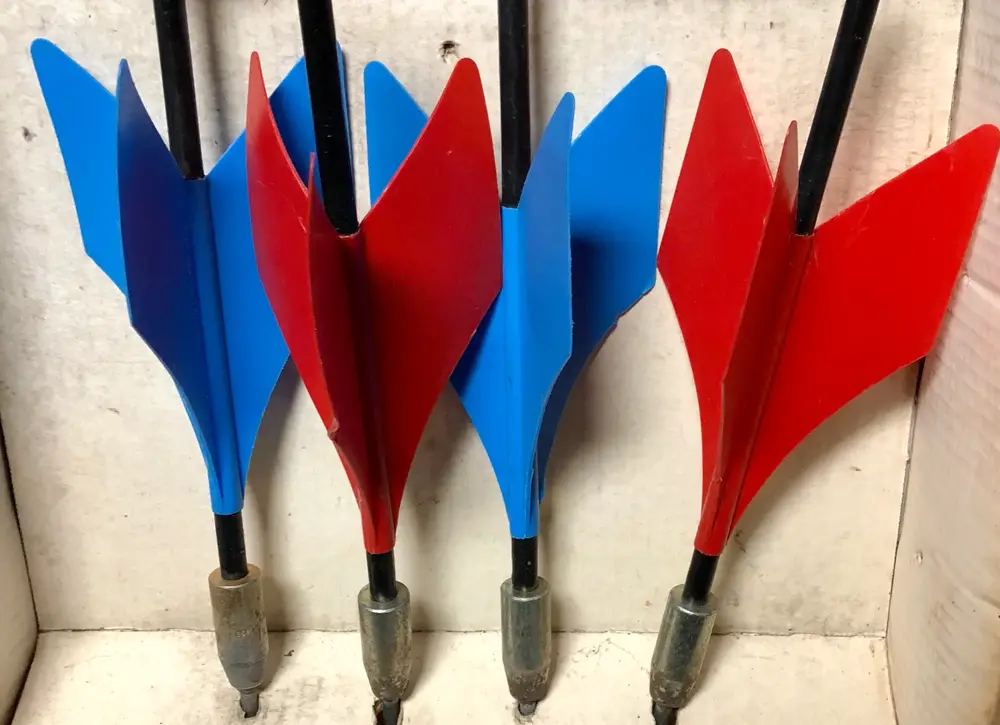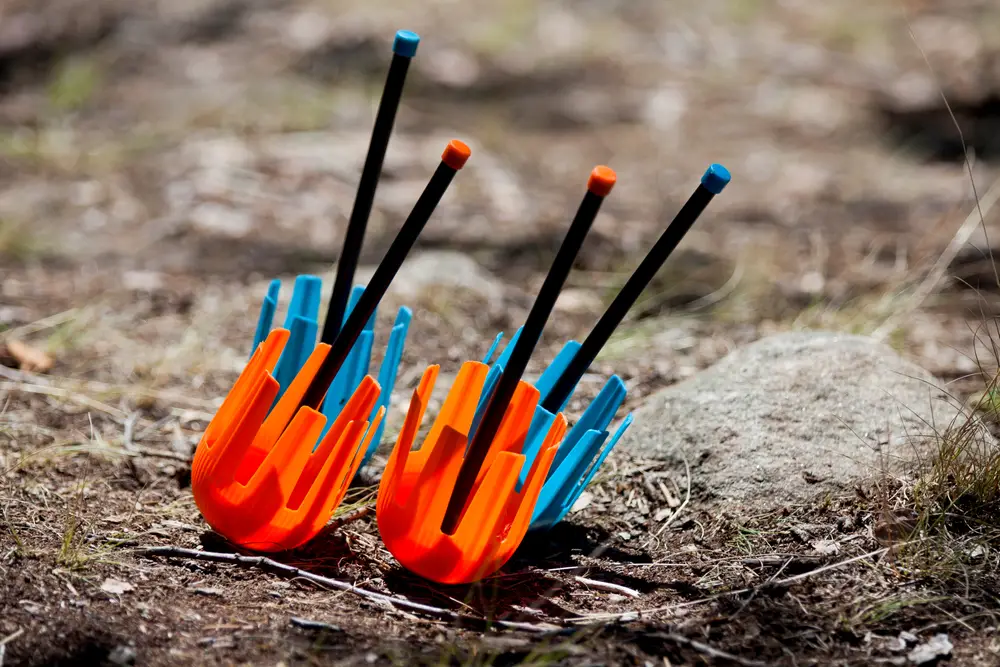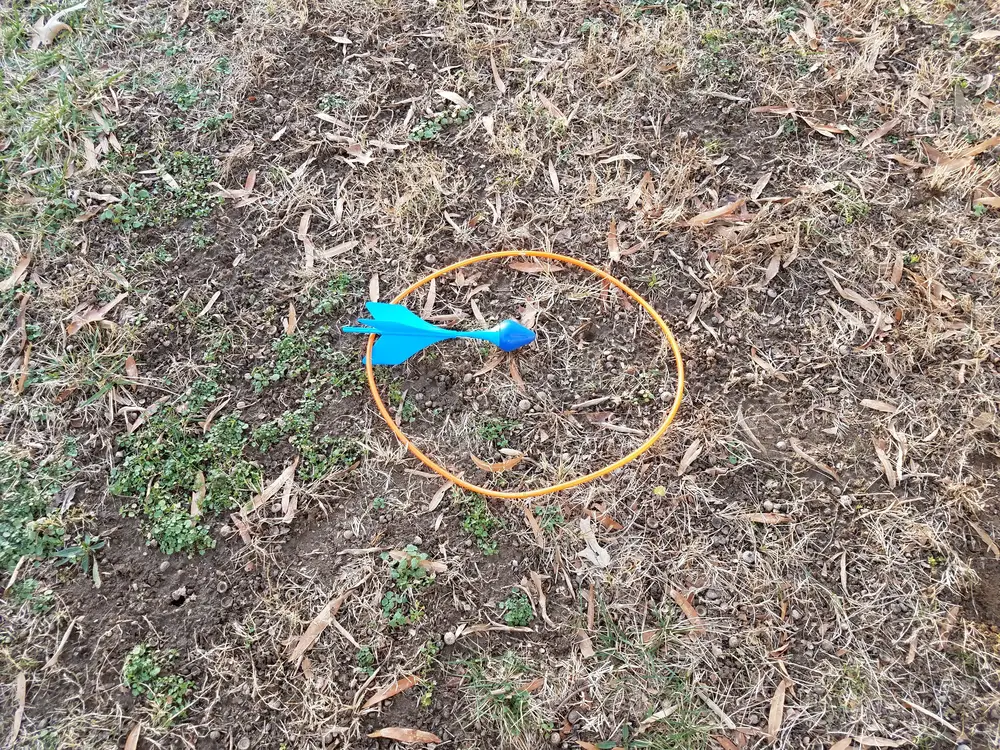When installing a trampoline on uneven or sloped land, the first step is always to measure the degree of the slope to plan for the correct angle. This angle will determine the depth of the trench you must build to even out the slope. You can use leveling blocks or cut the legs of the trampoline if the ground is not just sloped but also uneven.
If your kids are begging you for a trampoline and your only hesitation is your yard’s uneven ground or sloped angle, do not fear.
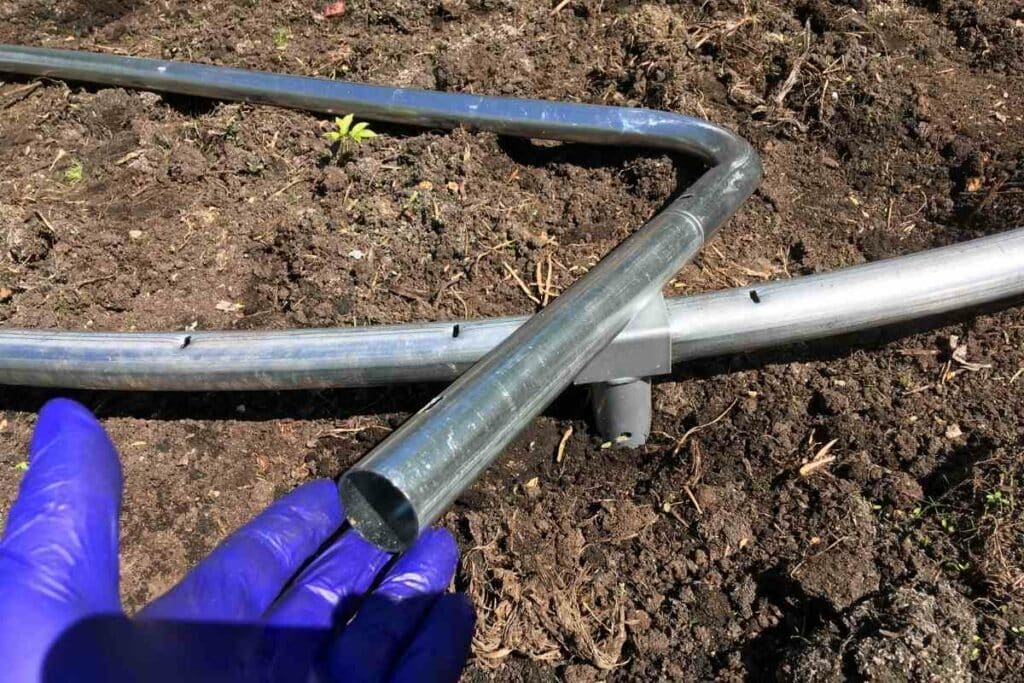
Installing a trampoline on a slope isn’t overly complicated but it is very important.
A trampoline on an angle or uneven ground can be dangerous so to avoid any unnecessary danger, read our guide on “how to install a trampoline on a slope” so the whole family can enjoy the never-ending fun that is an outdoor trampoline in your own yard without too much effort on your part.
How Do You Level a Trampoline When You Have a Sloped Yard?
The first step in installing a trampoline on a slope is measuring the exact angle of the slope.
If you struggled with high school math or don’t remember how to measure an angle, you’re not alone!
Our trampoline leveling guide for sloped land will have you installing a perfectly flat trampoline in just a few simple steps.
Let’s get cracking.
What Do I Use to Measure the Slope?
The degree of the slope will help determine which method you should use to level the yard.
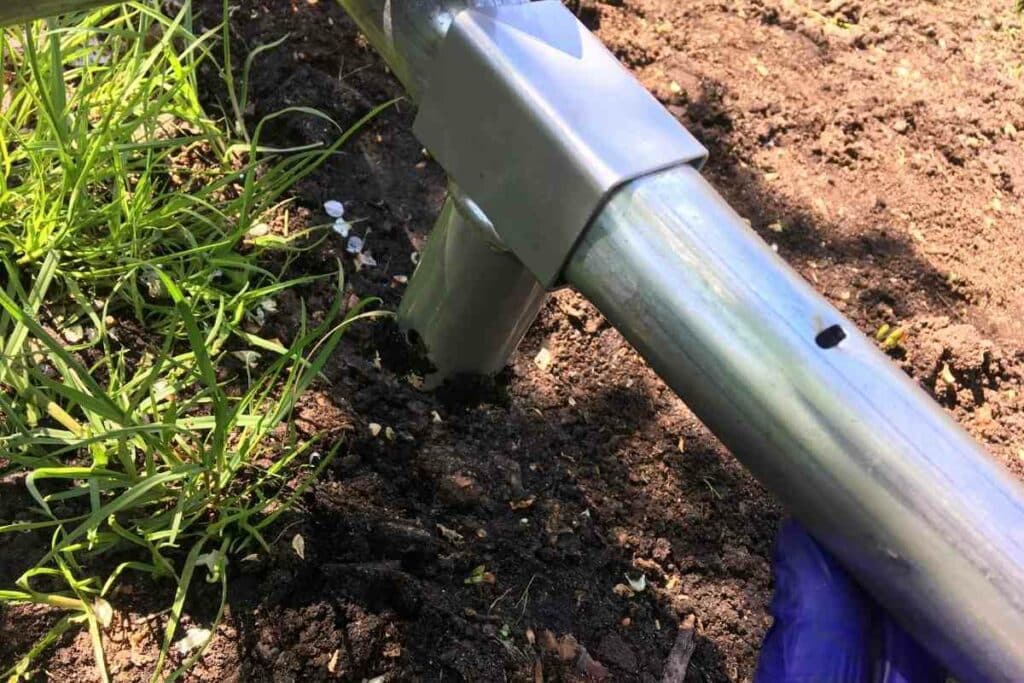
You will need a wood plank about the length of your trampoline, a level, and a measuring tape.
To begin:
- Position the trampoline on the site of your choice for the time being.
- Be sure this is the place you want your trampoline as you don’t want to have to re-dig your trenches!
- Place the wood plank on top of the trampoline so that it is parallel to the slope. This creates an easy spot for you to put your level and accurately measure the angle.
How Do I Measure the Slope?
If you’re new to the carpenter’s level, do not fear, they are rather easy to use.
Simply look for the bubble in the level and when it is in between the two solid lines, you can measure the distance from the surface of the downward-facing side of the plank and the top of the trampoline.
Follow these steps:
- Use your measuring tape for this step.
- Write down this number (it is easiest to use inches).
- Then, use your measuring tape to measure the diameter of the trampoline itself.
- The diameter is the distance from one side of the trampoline to the other.
- Now, divide the diameter of the trampoline by the number you got for the angle.
What Does This Number Tell Me?
If your math gives you a number greater than 7, you will need to move your trampoline to a different location.
As the angle is too great to account for safely.
If the result is under 7, you can go on to the next step!
Be Careful: Remember to use the same measurement for the diameter of the trampoline and the measure of the angle (inches) otherwise your result will be inaccurate!
How Do I Fix the Angle?
The best method is to dig a trench in the ground to account for the slope.
However, this depends on the type of ground at the site.
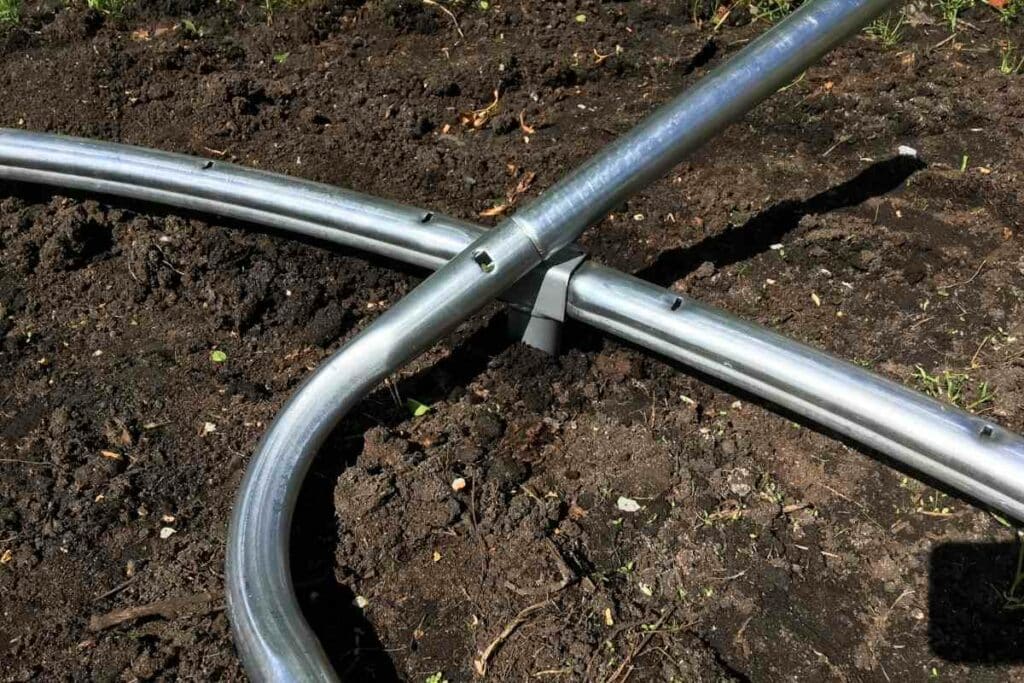
If it is dirt, sand, or grass, this method will work.
If you are installing your trampoline on concrete, you will need to cut the legs of the trampoline.
However, we don’t recommend putting a trampoline on concrete as it can be dangerous, and cutting the legs can be tricky.
How Do I Dig a Trench?
Digging a trench is easy. Simply use a shovel to dig holes where the legs will go.
These holes should be the depth of the trampoline’s angle which you measured using the wood plank and the level.
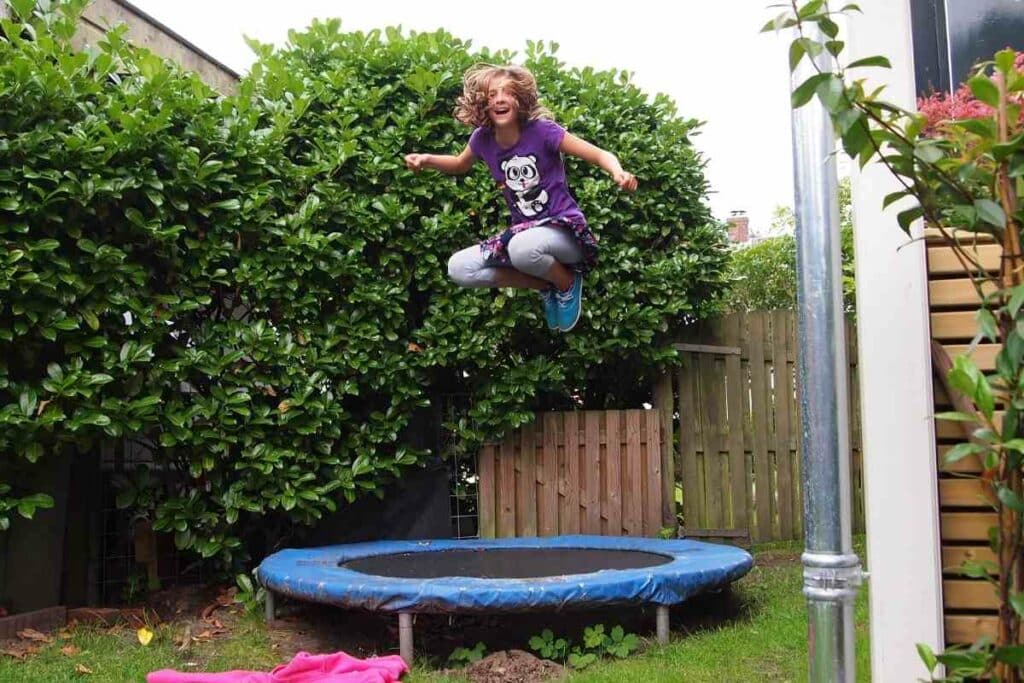
The holes need to be dug on the higher side of the trampoline as they will lower the surface where the legs sit down to the level where the lower two sit.
Once the holes are dug well and the trampoline is secured, use the wood plank and level method again to check the angle.
If there is no angle, your trampoline is good to go.
What Do I Do If the Ground Is Uneven Not Just Angled?
If the ground is uneven, you can invest in some leveling blocks.
Place the blocks under the legs with the lower ground until you get that even measure using the wood plank and level method.
Does the Angle Need to Be Perfectly Flat?
No. If you’ve dug your trenches and the angle is just slightly off, you don’t need to worry.
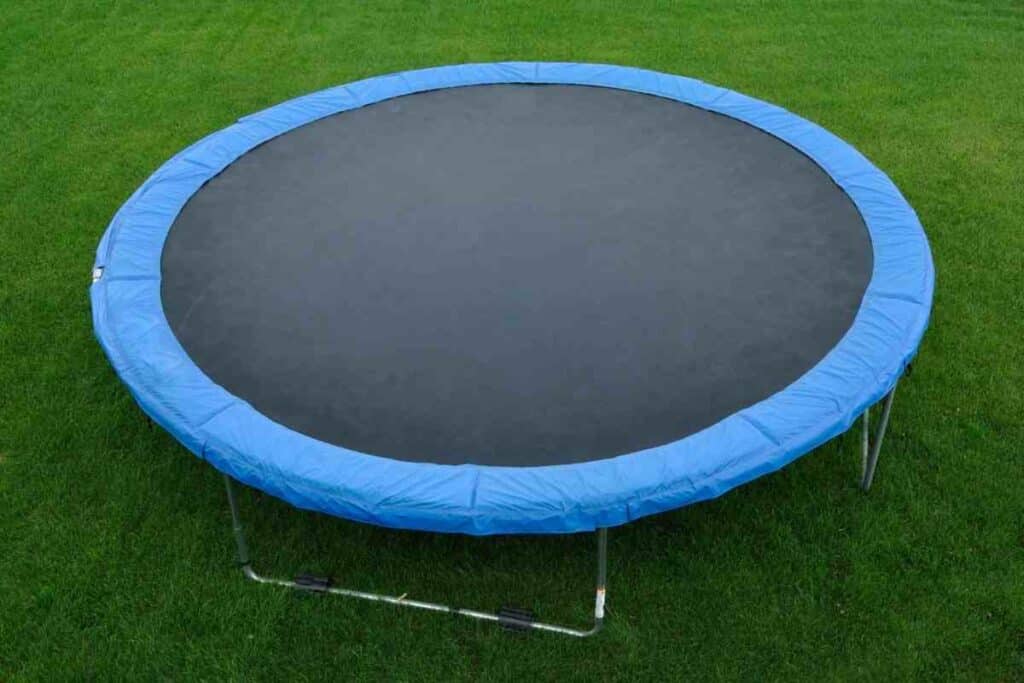
Once your kids start bouncing on the trampoline, the legs will dig into the ground more until the trampoline is flat.
If you’ve used leveling blocks, however, your angle should be very close to perfectly flat.
What If I Want to Cut the Legs of the Trampoline Instead of the Other Options?
If you would prefer to cut the trampoline’s legs, you can.
But, before doing so, be sure you are 100 percent happy with the placement of the trampoline because it won’t work anywhere else once it’s cut.
This option requires a saw of good quality as the trampoline legs are likely made of steel.
Try To Avoid: We don’t recommend this option as you won’t even be able to re-position the trampoline or re-sell it because it will be uneven from now on.
What Should the Area Around the Trampoline Site Look Like?
Before you install your trampoline, you must be absolutely sure that the land is cleared.
Debris such as branches, rocks, and leaves make the site less secure.
Once you have chosen your preferred trampoline location, we suggest giving it a good rake or sweep to ensure all the debris is cleared.
Get your kids to go on a scavenger hunt for rogue rocks at the site as well just to be sure it’s as clear as it can be.
Is Installing a Trampoline on a Sloped Yard Unsafe?
It is not unsafe to install a trampoline on a slope as long as you’ve accounted for the slope in the installation and dealt with it.
A trampoline on a slope is never a good idea.
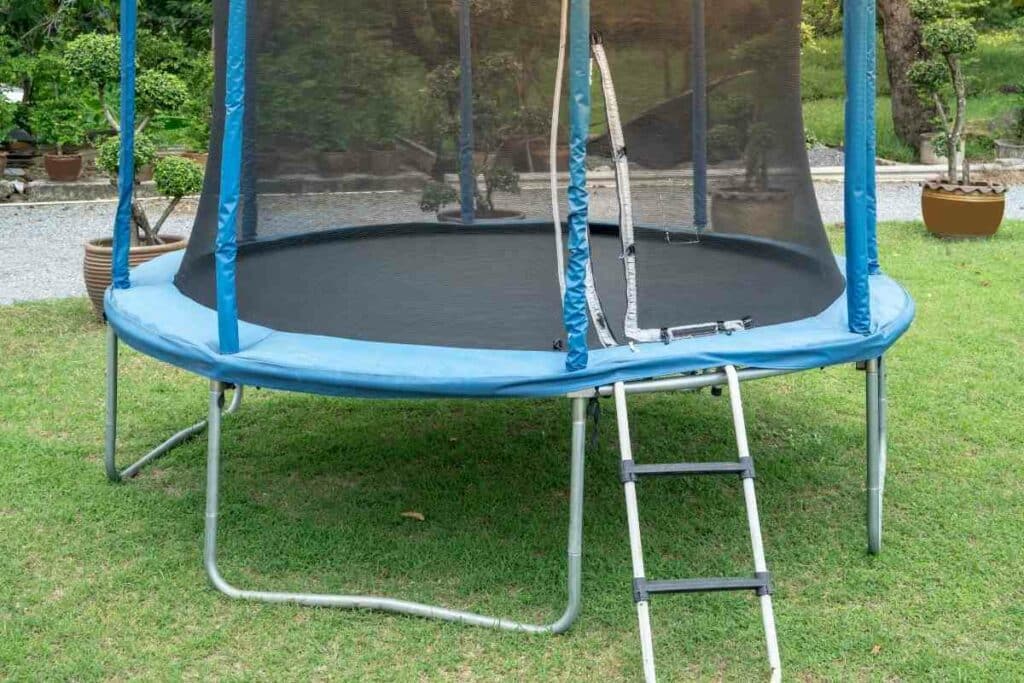
Sloped trampolines can be dangerous for children to jump on just as unsecured trampolines can be as well.
Final Thoughts
So if you searched “how to install a trampoline on a slope”, we hope you’ve found your answer here.
This is a common question because very few trampoline owners have perfectly level ground to work with.
But that doesn’t mean you can’t install your trampoline with absolute assurance that it’s safe for your kids (or maybe even yourself!).
So, remember to follow the steps to measure the angle accurately.
Dig your trenches properly and check that the angle has been leveled before securing the trampoline for good.
Once you see that bubble on the level perfectly in between the two lines, you can get jumping!

